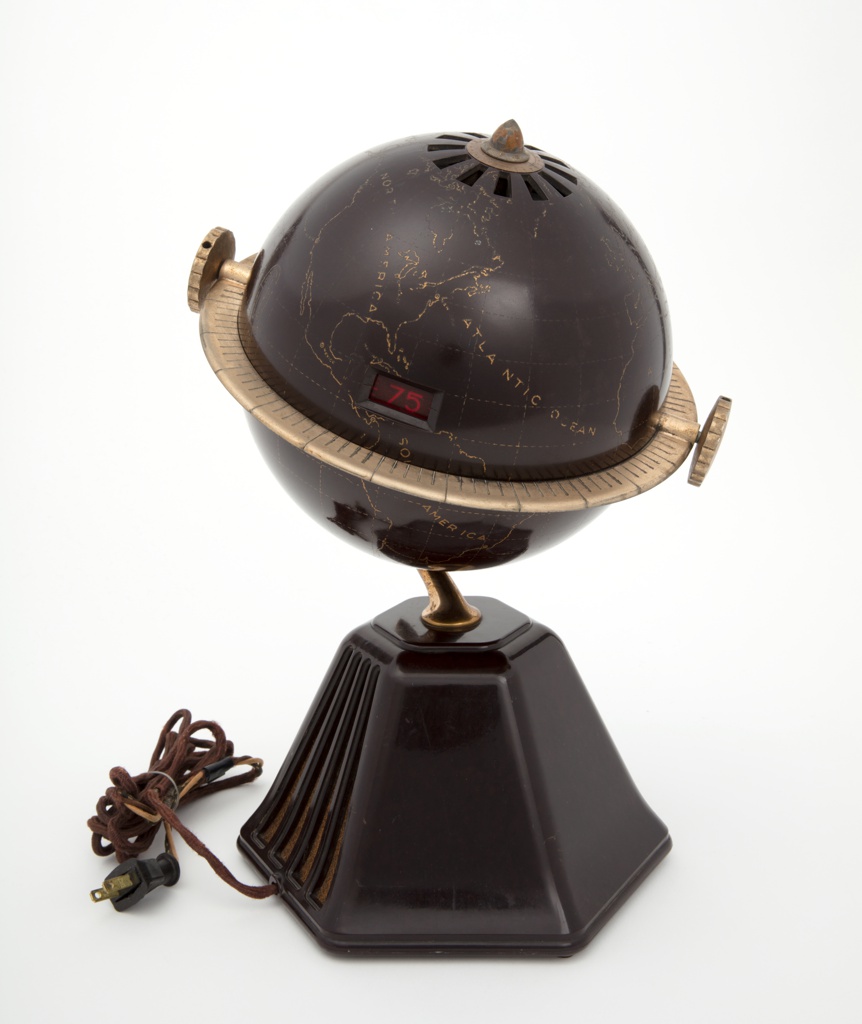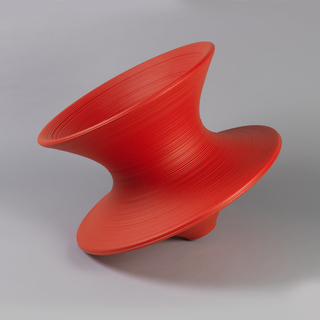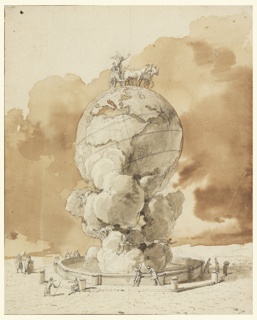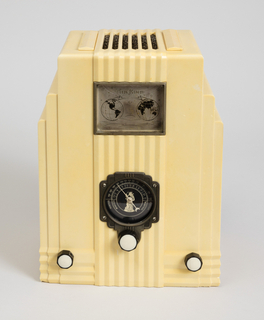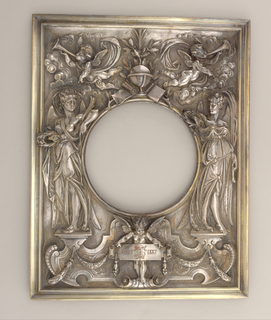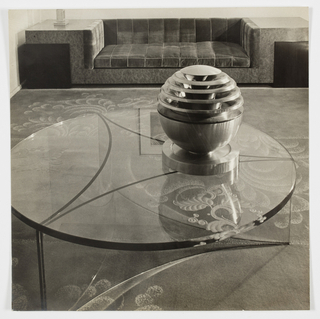There are 11 other images of this object. See our image rights statement.
Object Timeline
|
1933 |
|
|
2011 |
|
|
2012 |
|
|
2013 |
|
|
2015 |
|
|
2016 |
|
|
2017 |
|
|
2020 |
|
|
2025 |
|
New World Radio Radio
This is a radio. It was designed by Raymond Loewy and manufactured by Colonial Radio Corporation. It is dated 1933 and we acquired it in 2011. Its medium is plastic (catalin), metal, textile. It is a part of the Product Design and Decorative Arts department.
Raymond Loewy was one of the most prominent industrial designers in the United States. A French émigré, Loewy began practicing in the new field of industrial design in New York City in the 1920s, where he was recognized as “both artist and engineer.”[1] As a young child in Paris, Loewy observed how technological developments such as the automobile, the airplane, the phonograph, and the telephone, transformed everyday life. These transformations had a profound effect on the designer. Later, when Raymond witnessed the birth of radio, he would combine both his personal experience and views of the modern world into his designs, such as this New World radio designed for the Colonial Radio Company in the early 1930s.
In 1933, Fortune magazine described the New World radio as “the latest radio success” that aligned with the “current fad for globes in gift and drug stores, yet sells in the high price range.” The radio was the union of Loewy’s technical skills acquired from working at Westinghouse, as well as the use of the new material called Catalin (Bakelite), a very hard, heat resistant phenolic plastic that could be dyed different colors, filed, ground, cut, and polished to a high sheen.
The globe-shaped radio depicts the seven continents, but omits individual country names. It was available in three different color combinations: black and gold, maroon and gold, and ivory and gold. The ivory and gold option was considered the “top of the line.” The radio’s speaker was located in the base; the metal ring played a dual role—one as the decorative indication of the earth’s equator and the other as the functional connector of the two metal knobs that controlled the power, volume, and station tuning. Advertisements deemed the radio “the ultimate in design.” The New World radio was a commercial success despite its high price point of $60 during the Great Depression. By using a globe’s shape and decoration, Loewy linked listening to the radio with the modern notion of connecting to the world. The radio’s form also alludes to the globe as a decorative motif in historical decorative arts, such as Renaissance automata like celestial globes with clockwork.
The New World radio would be the earliest object to join the museum’s Loewy holdings. At the time of proposed acquisition, the museum’s collection of Loewy’s prodigious output includes design drawings, his Purma camera (1937), a range of ceramics for Rosenthal (ca. 1951–53), and dining ware and cutlery for the Air France Concorde (late 1970s). The New World radio also relates to other objects in the collection, including early 20th-century Bakelite radios and a highly detailed Swedish globe-form silver clock (ca. 1930) by Erik Fleming.
[1] Alden Jewell Edward, "No News Is Cool News" New York Times, June 2, 1929.
This object was featured in our Object of the Week series in a post titled The Latest Radio Success.
This object was
donated by
George R. Kravis II.
It is credited Gift of George R. Kravis II.
- Spun Chair
- rotationally molded polyethylene.
- Gift of Herman Miller, Inc..
- 2012-18-1
- Model 566 Bluebird Radio Radio, 1934
- glass, chrome-plated steel, wood, paint, textile, electronic components.
- Gift of George R. Kravis II.
- 2018-22-1
- Drawing, Design for a Public Monument to be Erected on a Paris Square
- pen and gray ink, brush and brown wash over black chalk, graphite on white....
- Purchased for the Museum by the Advisory Council.
- 1911-28-412
Our curators have highlighted 5 objects that are related to this one. Here are three of them, selected at random:
- Air King Model 66 Radio Radio
- thermoplastic (plaskon), metal, glass, textile, electronic components.
- Gift of George R. Kravis II.
- 2018-22-20
- Frame Frame
- copper, silver .
- Gift of Ronal Fritz.
- 1980-49-1
- Photograph, Interior with Table-Top Ziggurat Radio Cabinet
- black and white silver gelatin print.
- Gift of Ellen Gustav Jensen.
- 1956-47-84-n
Its dimensions are
H x W x D: 38.4 x 27.3 x 26 cm (15 1/8 x 10 3/4 x 10 1/4 in.)
Cite this object as
New World Radio Radio; Designed by Raymond Loewy (American, b. France, 1893–1986); Manufactured by Colonial Radio Corporation; USA; plastic (catalin), metal, textile; H x W x D: 38.4 x 27.3 x 26 cm (15 1/8 x 10 3/4 x 10 1/4 in.); Gift of George R. Kravis II; 2011-44-1
"Harlem River Quiver," Duke Ellington and his Orchestra (1928)
New World Radio is a breathtaking piece. The radio had an unbelievable influence on jazz in the 1920s and 1930s. Duke Ellington was very fortunate to not only perform at The Cotton Club six nights...
This object was previously on display as a part of the exhibitions The Jazz Age: American Style in the 1920s and Energizing the Everyday: Gifts From the George R. Kravis II Collection.
